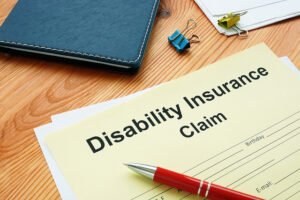When private equity professionals target a new portfolio company for acquisition, they face a myriad of risk. But for many investments, the single greatest exposure is the loss of key human capital.
While not an overwhelming factor in every transaction, some deals are burdened with stakeholders, founders and leaders that are critically tied to the brand and organizational success. When a dynamic human capital risk is identified, private equity professionals think of key person life insurance to transfer this risk and protect their investment. But that’s where most of them stop, leaving the largest exposure – the risk of that same individual being disabled – uninsured.
It’s often difficult to get across the idea that a key executive’s disability risk is many times greater than that of death during the first critical post-acquisition years, but statistically it is. A term life policy generally costs about one-third as much as key person disability coverage, and it should because the risk of death during the working years is far lower than the risk of disability. As the old adage goes, you get what you pay for. While ignoring the probability of disability may seem like a cost-saving opportunity, the odds may not be as favorable as they appear. In fact, the gamble is far less favorable than most of us may think. As it turns out, the Council of Disability Awareness (CDA) paints quite a different picture:
- 90% of us underestimate our chances of becoming disabled.
- 85% of us express little or no concern that we might suffer a disability lasting three months or longer.
- 56% of us don’t realize that the chances of becoming disabled have risen over the past five years.
Even in light of these findings, there are those who are still quick to dismiss the chances of becoming disabled as little more than scare tactics promoted by life insurance companies. The facts tell quite a different story, confirming that the chances of becoming disabled are far higher than we might think. Based on the findings of the CDA:
• A typical male, age 35, 5’10”, 170 pounds and a non-smoker who works in an office environment, with some outdoor activity, and who leads a healthy lifestyle has these risks: a 21% chance of becoming disabled for three months or longer during his working career, with a 38% chance that the disability would last five years or longer and with the average disability for someone like him lasting 82 months – nearly 7 years. If the same person used tobacco and weighed 210 pounds, the risk would increase to a 45% chance of becoming disabled for three months or longer.
• A typical female, age 35, 5’4”, 125 pounds and non-smoker, who works mostly an office job, with some outdoor physical activity and who leads a healthy lifestyle has these risks: a 24% chance of becoming disabled for three months or longer during her working career, with a 38% chance that the disability would last 5 years or longer, and with the average disability for someone like her lasting 82 months. If the same person used tobacco and weighed 160 pounds, the risk would increase to a 41% chance of becoming disabled for three months or longer.
As we might expect, there are factors that can increase a disability risk, such as excess body weight, tobacco use, high-risk activities or behavior, chronic conditions such as diabetes, high blood pressure, back pain, anxiety or depression, frequent alcohol consumption or substance abuse.
Based on the facts, it would seem appropriate for private equity firms to recognize the potential catastrophic effect that a disability event could have on their investment. Fundamentally, the risks are identical to investors in either the case of death or disability. Accordingly, the second step would be to mandate adequate company-owned key person disability protection on the CEO or other prime movers of the companies they acquire.Hiring the right CEO isn’t easy and when the need arises suddenly as in the case of disability, the situation is even more intense.
Also to be considered is that generally the success of companies being acquired tends to be closely tied to the CEO, who, more often than not, is the founder and visionary that drives its success. In addition, such companies are almost always lean, with few, if any, back-up personnel capable of stepping into the CEO’s shoes.
What’s at risk is enormous. Should the CEO be taken out of the picture suddenly, their investment is in danger and the company’s viability may well be put into serious question.
• To comment on this article, please visit this new thread now in the Disability Insurance Forum: Key Person Disability Coverage
Since building and maintaining investor confidence is a critical concern for private equity firms, they are best served by viewing the combination of key person life insurance and key person disability insurance protection as prudent moves for helping to reduce risk. Here is a case study that illustrates the point:
The subject was a 48-year-old male, who was the founder and CEO of a privately held technology company providing unique nanotechnology solutions to emerging global markets. He was an individual with distinctive personal talents and capabilities. He also held patents on technology in his own name.
Beyond that, he was a highly regarded thought leader who served as the face of his company. Specifically, the brand was intimately related to his family name and his public image.
The close of an $85 million majority equity investment was contingent upon securing key person life and disability coverage on this executive, since his commitment was essential to an efficient transition and the ongoing success of the business.
After thoroughly quantifying the potential impact an unforeseen death or disability would impose on the organization and, therefore, the transaction, $20 million of key person life and disability insurance was stipulated as a prerequisite for the consummation of the investment.
As it turned out, the existing insurance advisor could obtain $20 million of key person life insurance through traditional carriers. However, this advisor was unable to obtain $20 million of key person disability coverage from traditional insurance carriers as they lacked the needed capacity to protect the exposure.
As a result, a broker utilized his Lloyd’s of London relationship to design and underwrite a five-year key person disability policy, with a lump sum $20 million benefit payable after a 12-month elimination period to protect the private equity firm’s investment.

The implication seems clear: when the risks are as significant as they can be in just about any private equity transaction, the prudent solution is the best one. And this is why regaling anyone with stories about those who have suffered the consequences of failing to protect exposed assets is neither appropriate nor helpful. As we all know, such an event never happens to us, only to other people.However, it’s all about mitigating risk. For instance, we recently worked with the CEO of a 12-year old company and a world leader in snow and skate headwear sold by retailers in more than 40 countries worldwide. The company’s products have been endorsed and/or licensed by major athletes in all sports.
Although the company was already on the fast track, a private equity firm was posed to inject a surplus of additional funding in order to accelerate the company’s growth. The founder, who has established himself as the face of the company and a visionary instrumental in driving the company’s success, was also very active physically and had participated in a number of extreme sports.
Due to the high visibility of the CEO, the private equity firm sought key person disability coverage to protect their equity investment. Originally seeking a policy benefit of $60 million offset their loss dollar-for-dollar in the event the CEO becomes disabled, the private equity firm accepted a $45 million benefit recognizing the organization carrier residual value. With private equity investors feeling as though the critical risk period for their investment was in the first three years, the policy was designed to decrease to $20 million in the fourth year, and $10 million in the fifth, expiring at the end of 5 years. Traditional carriers already had in place term life in the event of death. With all policies in place the transaction went forward smoothly.
There is no rational way to justify taking unnecessary chances with investors’ funds, let alone do damage to the assets of the entity being purchased. This is why viewing key person disability protection, along with a well-constructed portfolio of key person life insurance, is the prudent decision and may even be looked upon as the fiduciary responsibility of the fund manager of a private equity firm.
• To comment on this article, please visit this new thread now in the Disability Insurance Forum: Key Person Disability Coverage
Edward A. (Ted) Tafaro, President & CEO of Mahwah, N.J.-based Exceptional Risk Advisors, LLC, is an expert on high-limit specialty life, accident and disability products for clients with extraordinary insurance needs, including celebrities, athletes, entertainers, highly compensated executives and professionals. By partnering with Lloyd’s of London syndicates, his firm has the largest binding authority available in the U.S. for its products. For more information, contact him at 201-512-0110 or [email protected].










